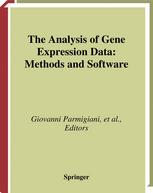

Most ebook files are in PDF format, so you can easily read them using various software such as Foxit Reader or directly on the Google Chrome browser.
Some ebook files are released by publishers in other formats such as .awz, .mobi, .epub, .fb2, etc. You may need to install specific software to read these formats on mobile/PC, such as Calibre.
Please read the tutorial at this link: https://ebookbell.com/faq
We offer FREE conversion to the popular formats you request; however, this may take some time. Therefore, right after payment, please email us, and we will try to provide the service as quickly as possible.
For some exceptional file formats or broken links (if any), please refrain from opening any disputes. Instead, email us first, and we will try to assist within a maximum of 6 hours.
EbookBell Team

4.7
56 reviewsThedevelopmentoftechnologiesforhigh–throughputmeasurementofgene expression in biological system is providing powerful new tools for inv- tigating the transcriptome on a genomic scale, and across diverse biol- ical systems and experimental designs. This technological transformation is generating an increasing demand for data analysis in biological inv- tigations of gene expression. This book focuses on data analysis of gene expression microarrays. The goal is to provide guidance to practitioners in deciding which statistical approaches and packages may be indicated for their projects, in choosing among the various options provided by those packages, and in correctly interpreting the results. The book is a collection of chapters written by authors of statistical so- ware for microarray data analysis. Each chapter describes the conceptual and methodological underpinning of data analysis tools as well as their software implementation, and will enable readers to both understand and implement an analysis approach. Methods touch on all aspects of statis- cal analysis of microarrays, from annotation and ?ltering to clustering and classi?cation. All software packages described are free to academic users. The materials presented cover a range of software tools designed for varied audiences. Some chapters describe simple menu-driven software in a user-friendly fashion and are designed to be accessible to microarray data analystswithoutformalquantitativetraining.Mostchaptersaredirectedat microarray data analysts with master’s-level training in computer science, biostatistics, or bioinformatics. A minority of more advanced chapters are intended for doctoral students and researchers.